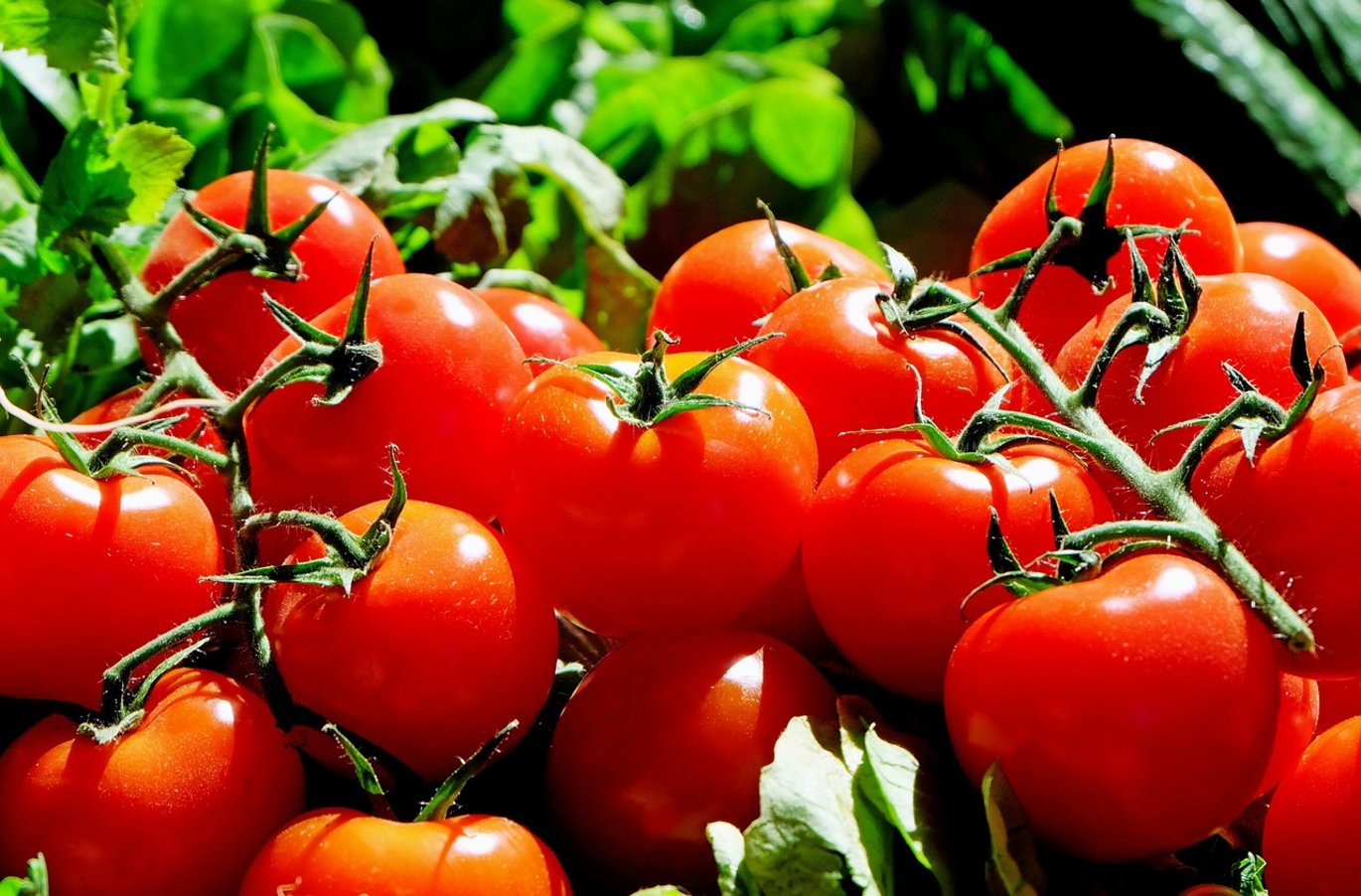New study provides a better understanding of the genetics of tomatoes
A new sequencing method allows researchers to read the genomes of organisms more accurately than previously possible. This study applies the new method to tomatoes, showing that it enables substantially improved genomic selection. The work has been published in the June issue of the journal Nature.

A collaboration between researchers at the Agricultural Genomics Institute at Shenzhen (Chinese Academy of Agricultural Sciences) and the Center for Quantitative Genetics and Genomics (Aarhus University) has just published in the journal Nature. Their work uses a more accurate method for sequencing tomatoes (reading their DNA). Previously, researchers would sequence using a single reference genome (i.e., each new tomato is compared to one reference tomato). Now it is possible to sequence using multiple reference genomes (i.e., each new tomato is compared to tens of reference tomatoes). This advance makes enables the researchers to record genetic variation more accurately and completely.
This paper shows that for thousands of tomato traits, the new sequencing method makes it possible to explain on average 24% more heritability (i.e., capture a quarter more genetic factors). Further, the research shows how the new sequencing method can dramatically improve the performance of genomic selection (how well we can breed tomatoes to maximize desirable properties such as size, taste and disease resistance).
According to the penultimate author, Doug Speed, "This work combines new developments in sequencing technology with the features of the statistical software LDAK, in order to substantially improve our understanding of the tomato plant". He continued, "Overall, the project represents a major breakthrough in tomato genetics that will enable much more efficient tomato breeding schemes."
The new work is entitled Graph pangenome captures missing heritability and empowers tomato breeding.
Additional information | |
We strive to ensure that all our articles live up to the Danish universities' principles for good research communication (scroll down to find the English version on the web-site). Because of this the article will be supplemented with the following information: | |
Study type | Computational Genome study |
Funding
| This work was supported by grants from the National Natural Science Foundation of China (no. 31991180 to S.H. and no. 31801441 to Y. Zhou), the National Key Research and Development Program of China (no. 2019YFA0906200 to S.H.), the Key Research and Development Program of Guangdong Province (no. 2021B0707010005 to J.Z.), the Shenzhen Science and Technology Program (no. KQTD2016113010482651 to S.H.), the Agricultural Science and Technology Innovation Program (CAAS-ZDRW202103 to S.H.) and the US National Science Foundation (IOS-1855585 to Z.F.). |
Collaborators
| Authors and Affiliations Shenzhen Branch, Guangdong Laboratory of Lingnan Modern Agriculture, Genome Analysis Laboratory of the Ministry of Agriculture and Rural Affairs, Agricultural Genomics Institute at Shenzhen, Chinese Academy of Agricultural Sciences, Shenzhen, China Yao Zhou, Zhiyang Zhang, Zhigui Bao, Hongbo Li, Yaqing Lyu, Yanjun Zan, Yaoyao Wu, Lin Cheng, Yuhan Fang, Kun Wu, Hongjun Lyu & Sanwen Huang Umeå Plant Science Center, Department of Forestry Genetics and Plant Physiology, Swedish University of Agricultural Sciences, Umeå, Sweden Yanjun Zan Key Laboratory of Biology and Genetic Improvement of Horticultural Crops of the Ministry of Agriculture, Sino-Dutch Joint Laboratory of Horticultural Genomics, and Institute of Vegetables and Flowers, Chinese Academy of Agricultural Sciences, Beijing, China Jinzhe Zhang Institute of Vegetables, Shandong Academy of Agricultural Sciences, Shandong Province Key Laboratory for Biology of Greenhouse Vegetables, Shandong Branch of National Improvement Center for Vegetables, Huang-Huai-Hai Region Scientific Observation and Experimental Station of Vegetables, Ministry of Agriculture and Rural Affairs, Jinan, China Hongjun Lyu State Key Laboratory of Agrobiotechnology, College of Horticulture, China Agricultural University, Beijing, China Tao Lin Boke Biotech, Wuxi, China Qiang Gao Boyce Thompson Institute, Cornell University, Ithaca, NY, USA Surya Saha, Lukas Mueller & Zhangjun Fei Robert W. Holley Center for Agriculture and Health, US Department of Agriculture, Agricultural Research Service, Ithaca, NY, USA Zhangjun Fei Institute of Integrative Biology & Zurich, Basel Plant Science Center, ETH Zurich, Zurich, Switzerland Thomas Städler Department of Botany and Plant Sciences, University of California, Riverside, CA, USA Shizhong Xu Department of Crop and Soil Sciences, Washington State University, Pullman, WA, USA Zhiwu Zhang Center for Quantitative Genetics and Genomics (QGG), Aarhus University, Aarhus, Denmark Doug Speed These authors contributed equally: Yao Zhou, Zhiyang Zhang, Zhigui Bao |
External commenting | This summary was approved by the first author. |
Conflicts of interest | The authors declare no competing interests. |
Read more
| The new work is entitled Graph pangenome captures missing heritability and empowers tomato breeding and is published in the June Issue of Nature. https://www.nature.com/articles/s41586-022-04808-9). |
Contact
| Professor Doug Speed, Center for Quantitative Genetics and Genomics. |
